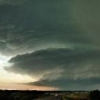
If one takes a look at the overnight 1/16 0z and 6z operational GFS runs, one finds both are very cold in the days 7-15 timeframe. Both also feature a strong EPO-. Both also contain a number of analog dates near moderate or larger snowstorms for some parts of the eastern half of North America.

But if one looks more closely, there is actually a rather dramatic change between the 0z and 6z runs. The latter shows the development of meaningful Atlantic blocking to coincide with the strong EPO-. Indeed, if one goes to the 11-day objective analogs from each of these runs, one finds the following:
0z Run:
Average AO: +0.125
AO > 0: 60% of analogs
AO of -1 or below: 30% of analogs
AO of +1 or above: 20% of analogs
6z Run:
Average AO: -1.128
AO < 0: 80% of analogs
AO of -1 or below: 70% of analogs
AO of +1 or above 10% of analogs
If one checks out the GFS ensemble forecast for the AO, one also finds that the many members are now favoring a negative AO in the extended range:

If this forecast verifies and dual Atlantic and Pacific blocking develop, that would increase prospects for a cold February in the eastern third to half of the CONUS, along with southern Ontario and Quebec. The latter cold anomalies would depend on the magnitude of blocking. If the blocking becomes too strong, then the cold anomalies could be driven southward.
Such dual blocking would also allow for potentially more opportunities for larger snowfalls. The Great Lakes region, northern Mid-Atlantic (e.g., Philadelphia) and southern New England areas remain on track for above normal seasonal snowfall, as the December outcomes were consistent with such seasons. The pattern ahead looks promising, particularly for the 1/25-2/15 period. If blocking develops, things could also become more favorable further south in the Mid-Atlantic region, including the Baltimore and Washington, DC areas.
The takeaway is that the theme of a growing probability of a cold outcome in parts of the eastern CONUS has been sustained in the overnight guidance. In fact, even as it is still outside its skillful range, the CFSv2 has recently shifted from featuring widespread February warmth to an increasingly colder idea for the eastern third to half of North America.






Recommended Comments
There are no comments to display.
Create an account or sign in to comment
You need to be a member in order to leave a comment
Create an account
Sign up for a new account in our community. It's easy!
Register a new accountSign in
Already have an account? Sign in here.
Sign In Now